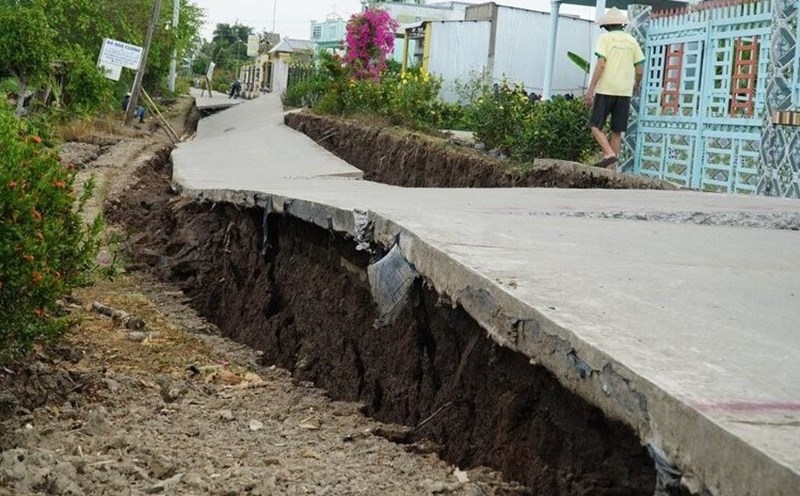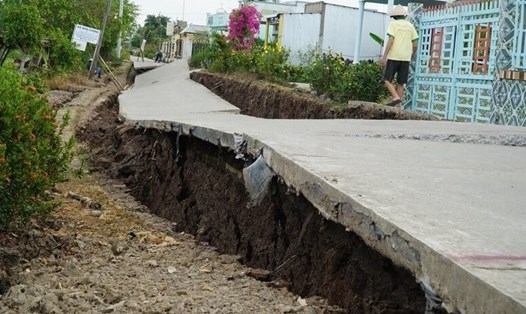17 dams are depleted in water
According to the Department of Agriculture and Environment, from the beginning of April 2025 until now, the common weather has been dry, with an average temperature of 15 - 34 degrees Celsius, and humidity ranging from 70 - 78%.
The amount of water in rivers and streams continues to decrease. Up to now, rivers, streams, ponds and lakes in many places have run out of water. Water retention in irrigation reservoirs has also decreased rapidly.
Although there was light rain (under 5mm) in some areas of the southern province in late March and early April, it was not enough to improve the drought situation.
Meanwhile, in the northern areas such as Cu cut, Krong No, Dak Mil, there is still no rain, causing drought and water shortage to be even more serious.
Currently, 17 dams managed by Dak Nong Irrigation Works Exploitation Company Limited have been depleted, an increase of 8 projects compared to the end of March 2025. The total capacity of dams in the province is currently only about 55%.
Works such as Doi 35 Lake, Doi 40 Lake, Dak Mbai Lake, Tang Gia Lake (Dak Lao Commune), Manh Thang Cooperative Dam, Doi 3 Lake (Duc Manh Commune), Xu Dang Lake (Dak N'Drung Commune, Dak Song District) are currently out of water.
In the center of Dak Mil, the area of crops affected by drought and lack of water has reached more than 4,700 hectares. In addition, about 270 households are facing difficulties in domestic water sources during this dry season.
The communes most affected include: Dak Lao (900ha), Dak gan (950ha), Duc Manh (756ha), Dak R'la (602ha) and Dak N'Drot (500ha). Most of the areas of dried crops are mainly coffee and pepper.
Unpredictable drought
Also according to the Department of Agriculture and Environment of Dak Nong province, droughts in Dak Nong province in recent years have become increasingly severe. It is worth mentioning that the drought is leaving serious consequences for agricultural production.
In particular, in 2016, the whole Dak Nong province had 210 hectares of wet rice forced to stop production right from the beginning of the crop. Over 20,000 hectares of key industrial crops such as coffee and pepper were seriously affected, leading to a sharp decrease in productivity due to drought.
By 2020, the area of crops damaged by drought in Dak Nong had skyrocketed, up to about 24,900 hectares.
The growing area is mainly concentrated in coffee and pepper growing areas. It is worth mentioning that these are all major crops, creating livelihoods for thousands of households.
In 2021, although the level has decreased, 1,257 hectares of crops of all kinds were still recorded affected by drought. By 2024, the whole Dak Nong province will have 10,721 hectares of crops affected by drought.
In 2025, although the dry season has not yet passed, Dak Nong has had more than 5,000 hectares of crops in drought, threatening productivity.
According to the assessment of the authorities, the above figures clearly reflect the severity of the drought in Dak Nong. In this context, it poses an urgent need for effective and sustainable response solutions.













